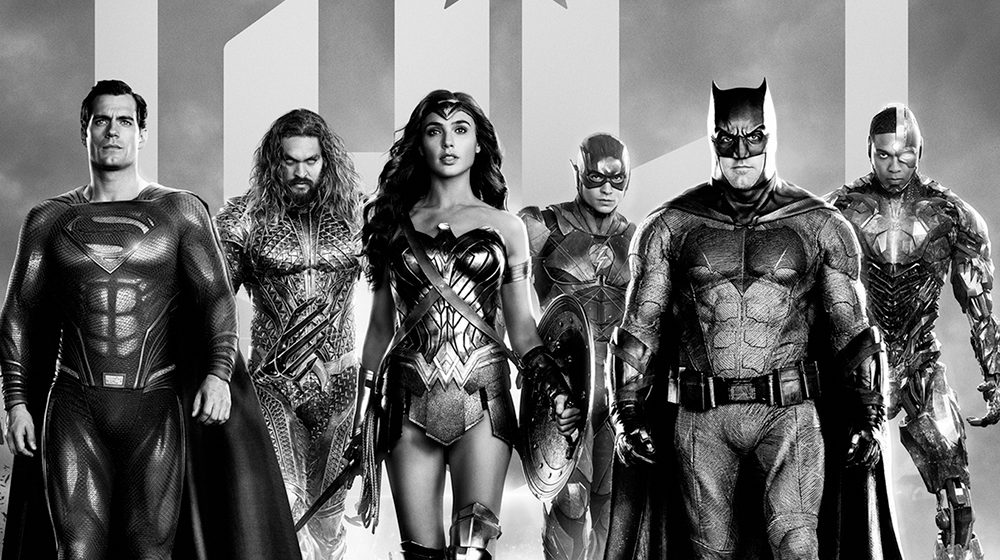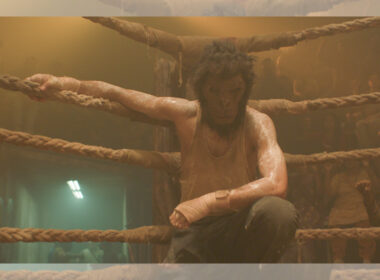Rating: ****
There is no way to start a review about Zack Snyder’s Justice League without giving the context that led to its release, four years after the original arrived at the cinemas in a thud of indifference. We can analyse this film for all its flaws and successes but missing the why and how is ignoring important pieces of this puzzle. Because there is no other way a film like this could ever be released; and yet we’re privileged to receive one of the boldest artistic statements ever backed up by a major studio since, perhaps, Francis Ford Coppola’s One From The Heart.
Full disclaimer, I am not a fan of Zack Snyder. I enjoyed the frenzied version of his Dawn of the Dead but since he dipped his toes in the world of comic book adaptions, I tended to passionately disagree with his politics. Watchmen was a degradation of one of the most important graphic novels ever written. Man Of Steel had a lot of style but iffy substance, and to this day Batman vs Superman: Dawn of Justice remains one of the worst blockbusters I’ve ever seen in the cinema.
Justice League was the follow-up to the critically panned Batman vs Superman: Dawn of Justice and planned to be the set-up for wider franchise, similar to the Marvel universe.
Unfortunately Snyder and his wife, producer Deborah, had to step down due to personal reasons and the studio recast a new director to complete Snyder’s vision. The chosen one was surprisingly Joss Whedon, until then one of the creative forces behind Marvel’s own successful Avengers saga
Whedon is a studio man who builds his scripts to be crowd-pleasers. His style couldn’t be more different that Snyder – his dialogue is witty and visually everything is an after-thought. Whedon started his career as a screenwriter and TV showrunner. He’s neither as euphoric nor over-dramatic as Snyder, but he delivers the goods. Except here, goods were not delivered. The result was bland Frankenstein patchwork that lacked any soul or sense of purpose.
Since then a group of voices on social media demanded for Warner Bros. to release Snyder’s own cut of what they believed to be a much superior film. It gained enough traction to receive the support of main cast and even Snyder, who admitted to having never seen Whedon’s version.
This is how we got here – three years later, Warner Bros. saw this as an opportunity to highlight their new streaming platform and offered Snyder a whopping $US80 million to reshoot, recut and rescore his supposed magnum opus. Regardless of what you think of him as an artist: no one can say this new version isn’t, in all its forms, superior to the 2017 film. I am as surprised as you are.
Clocking at a whopping 3h52m (4h03m in the US NTSC frame rate), it’s twice as long as Wheddon’s version: a gigantic behemoth of brazen experimental auteurism that is rare to see in blockbusters, let alone the flagship release of a major studio. Divided into six chapters and one epilogue, and released in this uncommon 4:3 boxed aspect ratio.
It’s a curious stylistic choice but it adds this eerie feeling that show these all-powerful superbeings small against a wider landscape, enhancing their lack of confidence and reluctance to accept their God-like responsibilities.
The idea of the story is the same, albeit with a couple of important differences. Evil alien Steppenwolf arrives on Earth to look for magic stones that will help him destroy the planet and enslave humanity.
Batman (Ben Affleck) and Wonder Woman (Gal Gadot) set forth to recruit other superheroes, Aquaman (Jason Momoa), Cyborg (Ray Fisher) and Flash (Ezra Miller), to revive Superman (Henry Cavill) and save the planet. It’s very by the numbers for the superhero genre: change the names and it’s almost the last Avengers movie.
It’s between the lines that the Snyder cut finds its footing. He uses the long running-time to develop his characters and pull on this tragic thread about the weight of responsibility and power. It’s almost like a Greek tragedy played by reluctant and insecure Gods.
The character who gains the most with this version is Fisher’s Cyborg. His reduced part in Whedon’s take, which focused on the more recognisable characters of Batman and Wonder Woman, was subject to a lot of speculation but in this version, he gets his time to shine.
It’s impossible to say if this Zack Snyder’s Justice League is the same cut he planned to release in 2017. In these years Snyder grew as an artist and suffered devastating loss – both in his family and professionally – and resurged from the cries of fans pleading for his return. All that sadness is here: the raw emotion of an artist trying to deal with his own demons, exorcising his emotion in the form of make-believe characters in silly costumes.
Two scenes with Martha Kent (Diane Lane), and a pivotal moment with Superman walking as he hears the voices of his father’s echo through the fabric of this film. In an alternate universe this version would’ve been vastly different, but as it stands it’s the work of an unrestrained artist with a blank cheque to reinvent the notion of the blockbuster. A bold piece of art in spite of – maybe even because of – its own flaws.
Zack Snyder’s Justice League is now streaming on Binge.




